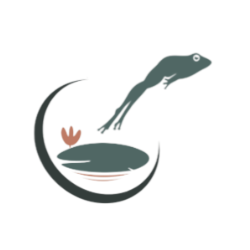What is it like to have anxiety or panic attacks?
There have been many occasions where a client will ask me ask me “How do I describe a panic attack to someone? I don’t know how. They just don ’t seem to understand what it’s like and it’s so hard to put into words.”. I give this analogy to most of my clients and encouraged them to use it when attempting to explain what panic attacks are like. Imagine there is a wild tiger standing in front of you ready to attack. Take a moment. Write down what you would be thinking and, more importantly, feeling. Sweaty? Heart Racing? Racing thoughts? Nausea? I think they all would be safe bets! Panic attacks are as if there is a tiger standing in front of us, but the tiger isn’t physically there. Our fight or flight system is on fire! An overwhelming feeling that something is very wrong and you’re helpless to stop it. The brain desperately looks for a cause, but there’s none to be found.
You see, the issue lies in that the “problem” is not there. Our brain or body is sensing that there is danger but there is no physical danger. Anxiety or panic is fearing the physical symptoms. Now, by fearing the physical symptoms, our body can ignite the fight or flight system without having a particular stressor present. So, if we are in an intense state of terror and we don’t know why or how to stop it; we begin to question “Am I crazy?”, “Am I dying?”. Many of the physical symptoms we experience in panic attacks do mimic serious illness.
Getting Through a Panic Attack
When you are having a panic attack, it is really difficult to get it under control. However, it is not impossible. It is best if you talk to a therapist to learn the best techniques to help your individual symptoms of panic attacks. However, in the meantime, there are some things you can do.
Acknowledge: that you are having a panic attack. You are not dying, not in serious danger, you are experiencing panic.
Accept: the fact that you are scared and afraid. Don’t fight the panic- work with it.
Wait: Do not just jump into action. Similar to counting ten before saying something when you are angry. So, even though you have a powerful urge to leave, postpone that decision for a little bit. Don't tell yourself you CAN'T leave - keep that option open so you don't feel trapped - but put off the decision about whether or not to leave. Stay in the situation. You don't need to run away to get relief. Let relief come to you.
Watch: what happens during the panic. How does it start? How do you respond? How long does it last? Often times becoming the observer helps move us away from the victim role and in turn, can reduce anxiety.
So, wait...Is it my job to end a panic attack!? It's not your job to stop the panic attack; that will happen no matter what you do.
The fact is, every panic attack ends no matter what you do. If you respond the best way possible, and do a good job at coping with the symptoms, the panic attack will end. If you do everything the worst way possible - struggling and resisting and running away in ways that make the panic worse - that one will end as well. Even the first panic attack a person has, when they have the least idea of what's happening, those end as well.
Deep Breathing
Breath with your belly! The equation is simple:
Breathe In → Belly Out
Breathe Out → Belly In
Take a normal breath in through your knows and exhale for 4 seconds. The next time exhale for 5 seconds then, 6,7, and 8 seconds.
By doing this when we breathe this encourages us to breathe with our diaphragm. Most people think they know how to do deep breathing but most do it incorrectly. If our deep breathing is centralized around our shoulders, chest, and neck; there is a good chance that those deep breaths will not work or make it worse because they are what we call “shallow breaths” aka the cousin of hyperventilating.
Relax Your Muscles
There is a skill I teach to all of my clients. It is called Progressive Muscle Relaxation.
Most simple way to start utilizing this technique is to start at your toes and work all the way up your body hitting as many muscles as possible.
You start by flexing the body part or muscle you are focusing on. For instance, curl or flex your toes and hold them for about 10 seconds (should feel a slight burn). Then relax them and Repeat.
Flex for 10 seconds → Relax → Repeat
Do this or each body part/muscle
Stay Present
Anxiety and Panic almost exclusively deal with things in the future and past. People don't panic in the present. This is why your panic attacks are almost always accompanied by some "what if...?" thought. The reason you say "what if...?" is because what you fear is not actually happening!
Get back into the activity you were engaged in prior to the attack, and become involved with the people and objects around you. If you're in a store, resume shopping, reading labels, comparing prices, asking questions, etc. Panic and anxiety inherently push us to avoid and seclude. By staying active and pushing through the anxiety/panic, it will move you closer to your goal of overcoming panic attacks when you bring your focus and energy back to the present environment. By this I mean, work with what is around you.

